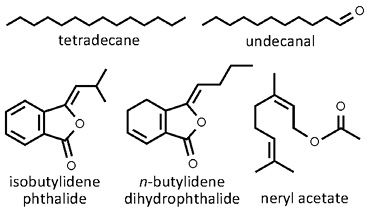 Nelumbo nucifera
Nelumbo nucifera
lotus
Back to “Culinary herbs: lotus leaf (Nelumbo nucifera)”
Nelumbo nucifera Gaertn. (Nymphaeaceae); lotus (Afrikaans); he hua, lian (Chinese); nelumbo, lotus sacré (French); Lotosblume (German); kanwal (Hindi); nelumbo (Italian); hasu, renkon (Japanese); bunga telpok, teratai (Malay); kamala (Sanskrit); loto sagrado (Spanish); bua luang (Thai)
DESCRIPTION Lotus leaves in the form that they are sold are approximately 45 cm (ca. 18 in.) long and 25 cm (10 in.) wide. Fresh leaves have a sweet and slightly bitter taste, while dry leaves have a fresh, earthy taste described as tea-like. The small nuts (“seeds”) have an almond-like flavour, while stamens (removed from the flowers) have a floral fragrance.
THE PLANT An aquatic plant with fleshy rhizomes and large, attractive, red, pink or white flowers. The one-seeded fruits (nuts) are borne in a distinctive flat-topped compound fruit.
ORIGIN Southern and eastern Asia to tropical Australia. Lotus is considered sacred in India, Tibet and China and features prominently in oriental religion and mythology. It has been cultivated since ancient times and is an important and versatile commercial food plant and flavourant.
CULTIVATION Plants are propagated from rhizome sections and grow easily in shallow water in tropical regions.
HARVESTING The leaves, flowers, stamens, nuts (“seeds”) and rhizomes are hand-harvested as required. All parts are used fresh but can also be dried for later use.
CULINARY USES Lotus leaf (he ye) is used as a culinary herb or spice. Dried leaves are soaked in water for about an hour before use. In China, food is commonly wrapped in lotus leaves as a means of flavouring the dish (similar to the use of pandan leaf in Thailand). Well-known examples include he ye zheng ji (“chicken wrapped in lotus leaf”) or Chinese tamale, a special pastry wrapped in lotus leaves.2 Another method of flavouring dishes is to use the leaves as a lining for bamboo steamers when steaming meat or fish. The dried leaves can be enjoyed as tea or used to flavour tea. The flowers (petals) are an ingredient of traditional dishes, such as he hua ji (“chicken with lotus flowers”).2 Dried stamens are used to make a fragrant tea (lian hua cha in Chinese, chè sen in Vietnamese). The nuts (lian zi) are either eaten raw as nuts (after removal of the bitter embryos) or they may be dried and popped, like popcorn. They are also used to add an almond-like taste to soups and stews. Lotus seed paste, made from soft-boiled “seeds”, is a starchy base for rice flour pudding and confectionery items such as mooncakes.2 The rhizomes are boiled or roasted and eaten as a vegetable.2 They may also be salted and dried or fried like potato crisps.
FLAVOUR COMPOUNDS The volatile flavour compounds of lotus leaves, stems and petals are phthalides, of which the main compounds are tetradecane isobutylidene phthalide (stems) and n-butylidene dihydrophthalide (petals).3 The leaves contain tetradecane. The stamens have aldehydes and esters as flavour compounds, mainly undecanal and neryl acetate.3

NOTES The lotus effect refers to the very high water repellence of lotus leaves, caused by the peculiar micro- and nanoscopic architecture of the leaf surface. The principle has been commercialised in self-cleaning paints and coatings.
1. Mabberley, D.J. 2008. Mabberley’s plant-book (3rd ed.). Cambridge University Press, Cambridge.
2. Hu, S.-Y. 2005. Food plants of China. The Chinese University Press, Hong Kong.
3. Choi, H.-S. 2011. Headspace flavor composition of pink-flowered lotus (Nelumbo nucifera Gaertner). Analytical Chemistry Letters 1: 194−201.